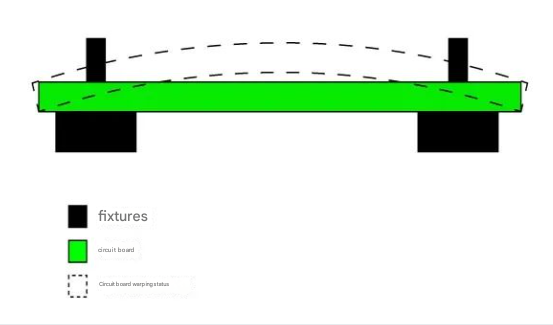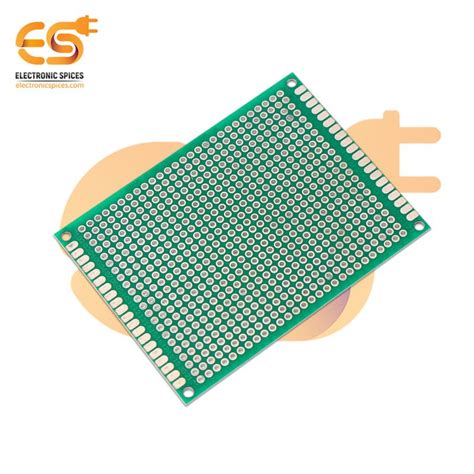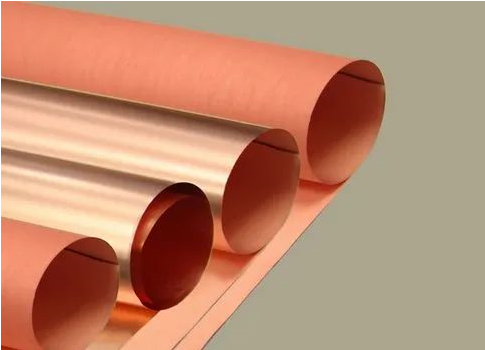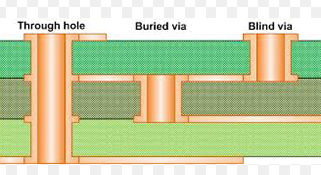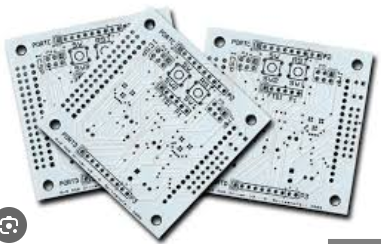Mastering Board Assembly: Tips for Precision and Efficiency
Key Takeaways
When diving into pcb assembly or pcba, understanding the fundamentals of the process is paramount. The assembly of printed circuit boards, commonly known as pcb assembly, involves intricate steps that require precision to ensure functionality and reliability. Essential techniques and tools play a crucial role in enhancing efficiency and accuracy. Utilizing modern technology, such as automated machines for soldering and placing components, can streamline workflows significantly. Best practices, including proper handling and placement of parts, also contribute to minimizing errors that may arise during assembly. Importantly, avoiding common pitfalls—such as misalignment or insufficient soldering—can lead to significant improvements in results. Ultimately, a keen focus on quality control throughout the pcba process will ensure that the final product not only meets but exceeds expectations for performance and durability. By mastering these key aspects, professionals can enhance their skills in board assembly and propel their productivity to new heights.
Essential Tools and Equipment for Effective Board Assembly
Successful pcb assembly hinges on having the right tools and equipment at your disposal. The primary items required include a quality soldering iron, which is essential for connecting components to the pcb effectively. Solder — specifically lead-free solder — is also critical for maintaining high standards in modern assembly practices. In addition to basic hand tools, an efficient workstation should be equipped with an anti-static mat and wrist straps to prevent electrostatic discharge, which can damage sensitive components in a pcba environment. Magnification tools such as microscopes or magnifying lamps make it easier to inspect your work for precision, ensuring that every connection is flawless. Furthermore, investing in a hot air rework station can greatly enhance your capabilities by allowing for the removal and replacement of Surface Mount Technology (SMT) components without causing damage. Assembling a comprehensive toolkit not only fosters efficiency but also supports precision, ultimately leading to higher quality results in your board assembly projects. Ensuring that you have these essential tools will pave the way for effective pcb assembly, minimizing errors that can lead to costly rectifications.
Techniques for Precision in Board Assembly
Achieving precision in pcb assembly requires a detailed understanding of both the components involved and the processes utilized. One fundamental technique is maintaining a clean and organized workspace, which minimizes the risk of contamination and errors during pcba operations. Properly calibrating equipment, such as pick-and-place machines and soldering tools, plays a crucial role in enhancing accuracy. It’s essential to utilize high-quality materials, as inferior components can compromise the integrity of the entire assembly. Additionally, implementing systematic checks at various stages of the process can catch potential issues early, allowing for corrections before they escalate.
The use of advanced technologies, such as automated optical inspection (AOI) systems, can also significantly enhance precision by identifying defects that might go unnoticed to the human eye. Furthermore, training team members on best practices in board assembly ensures that everyone involved is aware of their roles and responsibilities, fostering a cohesive approach to maintaining quality. Regularly revisiting and refining these techniques not only boosts efficiency but also contributes to the long-term reliability of your pcba projects. By focusing on these key areas, you will likely see improvements not only in your end product but also in overall operational efficiency.
Streamlining Your Workflow: Best Practices for Efficiency
When engaging in pcb assembly or pcba, optimizing your workflow is crucial for enhancing both productivity and precision. A systematic approach can lead to significant improvements in the assembly process. Start by organizing your workspace; ensure that all necessary tools and components are within easy reach, which minimizes unnecessary movement and saves time. Implementing color-coded bins for components can help streamline the inventory management process, allowing quick identification and access to needed parts. Additionally, adopting techniques such as just-in-time inventory can further improve efficiency by reducing excess stock and ensuring that materials arrive precisely when they are needed.
Moreover, utilizing modern technology such as auto-insertion machines and automated optical inspection systems can drastically reduce human error, enhancing the overall quality of pcb assembly. Creating a standardized procedure for repetitive tasks not only solidifies consistency but also accelerates training for new team members. Establishing clear communication channels across teams involved in the pcba process can enhance collaboration and troubleshoot issues swiftly. Lastly, conducting regular reviews of your workflow practices, combined with embracing feedback from team members, contributes to continuous improvement efforts, making the assembly process both more efficient and effective in achieving flawless results.
Common Mistakes to Avoid in Board Assembly
When engaged in pcb assembly, it is crucial to be aware of common pitfalls that can jeopardize the integrity and quality of your work. One prevalent mistake is neglecting thorough pcba inspection before starting the assembly process. Skipping this step can lead to overlooking defects in components that might compromise the entire board. Another frequent error involves improper alignment of components; misalignment during placement can result in malfunctioning circuits, making it essential to verify component orientation repeatedly. Additionally, using incorrect soldering techniques can cause cold joints or bridges, leading to connectivity issues. It’s also important to manage the environment effectively; inadequate static control can damage sensitive components, so investing in proper anti-static equipment is advisable. Finally, failing to document changes in design or component specifications can cause confusion and inconsistency in future assembly processes. By avoiding these common mistakes and adhering to best practices, you will significantly enhance the overall quality of your pcb assembly projects and contribute positively to your skill development within the field of pcba.
Quality Control: Ensuring Flawless Results
Quality control is a critical component in the world of pcb assembly and pcba, ensuring that each unit meets the established standards before it reaches the consumer. To achieve impeccable results, various strategies should be employed throughout the assembly process. First and foremost, implementing stringent inspection techniques can significantly reduce defects. Regular checks during the assembly phase allow for early detection of potential issues, minimizing waste and rework.
Utilizing advanced technologies such as automated optical inspection (AOI) is also vital for maintaining quality. AOI systems can swiftly scan assembled boards for discrepancies, verifying that all components are correctly placed and soldered without human error. Additionally, employing a defined testing protocol, including functional tests, can help determine whether the pcb assembly operates effectively under expected conditions.
Moreover, creating a culture of quality within your team fosters responsibility and attentiveness at every stage of production. Training staff on best practices not only improves their skills but also reinforces the importance of quality in every pcba project. Documentation plays a key role as well; maintaining accurate records of process controls and inspection results can help identify trends or recurring issues that may need addressing.
In conclusion, by prioritizing quality control measures and fostering an environment that values precision in pcb assembly, professionals can ensure flawless outcomes that enhance both productivity and reputation in this competitive industry.
Advanced Techniques for Professionals in Board Assembly
In the realm of pcb assembly (PCBA), advancing your skill set is crucial for staying competitive and achieving exceptional outcomes. Professionals in board assembly must master a variety of advanced techniques to ensure that their products not only function correctly but also adhere to industry standards. One pivotal technique involves the implementation of automated assembly processes, which significantly reduces the likelihood of human error while enhancing production speed. Additionally, utilizing surface mount technology (SMT) is essential for professionals, as it allows for more efficient use of space on the circuit board, ultimately improving the overall design and functionality.
Another advanced method is the adoption of design for manufacturability (DFM) principles. This approach necessitates a close collaboration with designers to detect potential issues in the early stages of development, thereby mitigating risks during pcb assembly. Furthermore, leveraging precise soldering techniques such as laser soldering or reflow soldering can bring improved reliability to your assemblies, reducing defects and increasing yield rates.
Additionally, incorporating rigorous testing protocols throughout the manufacturing process—such as automated optical inspection (AOI) and functional testing—can ensure that each unit meets stringent quality criteria before it reaches end users. By embracing these advanced techniques and continuously refining skills in pcba, professionals can vastly improve both precision and efficiency in board assembly.
Future Trends in Board Assembly Practices
As the landscape of pcb assembly continues to evolve, several future trends are shaping the practices within the industry. One significant advancement is the integration of automation and robotics, which promises to enhance the precision and efficiency of pcba processes. Automated systems can handle repetitive tasks with high accuracy, ultimately reducing human error and speeding up production timelines. Furthermore, the use of advanced software for design and simulation is on the rise, allowing engineers to visualize and optimize their assembly processes before actual production begins. This not only streamlines workflow but also leads to better decision-making in design adjustments.
Another trend gaining traction is the focus on sustainable practices within board assembly. Companies are increasingly adopting eco-friendly materials and processes that not only minimize waste but also meet regulatory standards. Additionally, manufacturers are investing in training programs that emphasize both technical skills and eco-consciousness, preparing teams for a future where environmental considerations become integral to every stage of production.
Moreover, there is a growing interest in smart manufacturing technologies such as IoT (Internet of Things) applications that provide real-time monitoring and data analytics throughout the pcba process. These innovations enable teams to identify potential issues quickly, enhancing overall productivity while maintaining quality control standards. As these trends continue to develop, professionals in board assembly will need to stay informed and adaptable to maintain a competitive edge in this fast-paced industry.
Conclusion
In summary, mastering pcb assembly requires a meticulous approach that combines understanding of essential techniques, proper tools, and an awareness of best practices. Throughout this article, we’ve explored the foundational elements of pcba to help enhance your skills in this critical field. Avoiding common mistakes is vital to ensure not only precision but also efficiency in your processes. Implementing quality control measures can safeguard the integrity of the final product and enhance overall productivity. By staying informed about future trends in board assembly practices, professionals can continue to refine their methods and stay competitive in an ever-evolving industry. As you engage with these insights, remember that every improvement made in board assembly techniques contributes significantly to achieving excellence and efficiency in your projects. By applying these principles diligently, you can unlock new levels of success in your pcb assembly endeavors.
FAQs
What is PCB assembly?
PCB assembly refers to the process of mounting electronic components onto a printed circuit board (PCB) to create a fully operational electronic device. This includes soldering components and ensuring they are properly connected to function as designed.
What does PCBA stand for?
PCBA stands for Printed Circuit Board Assembly, which is essentially the finished assembly of a PCB with all its components soldered and interconnected.
What are the common methods used in PCB assembly?
Common methods for PCB assembly include manual assembly, automated placement, and wave soldering. Each method has its own advantages and is chosen based on the specific needs of the project.
How can I ensure quality in my PCB assemblies?
To ensure quality in PCBA, implement rigorous quality control measures such as visual inspections, automated optical inspections (AOI), and functional testing. These steps help identify and correct issues before they lead to failures.
What tools do I need for effective board assembly?
Essential tools for effective board assembly include soldering irons, pick-and-place machines, stencil printers for applying solder paste, and inspection microscopes to monitor solder joints.
Feel free to deepen your understanding of pcb assembly by exploring industry resources. For more detailed information on techniques, techniques, and best practices in this field, please click here: Andwin PCB Assembly.

